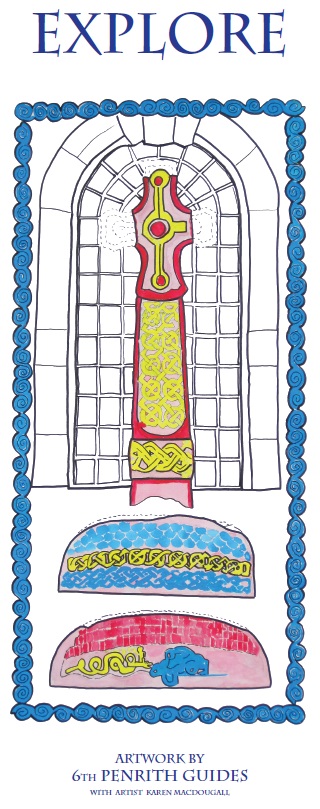Early Medieval
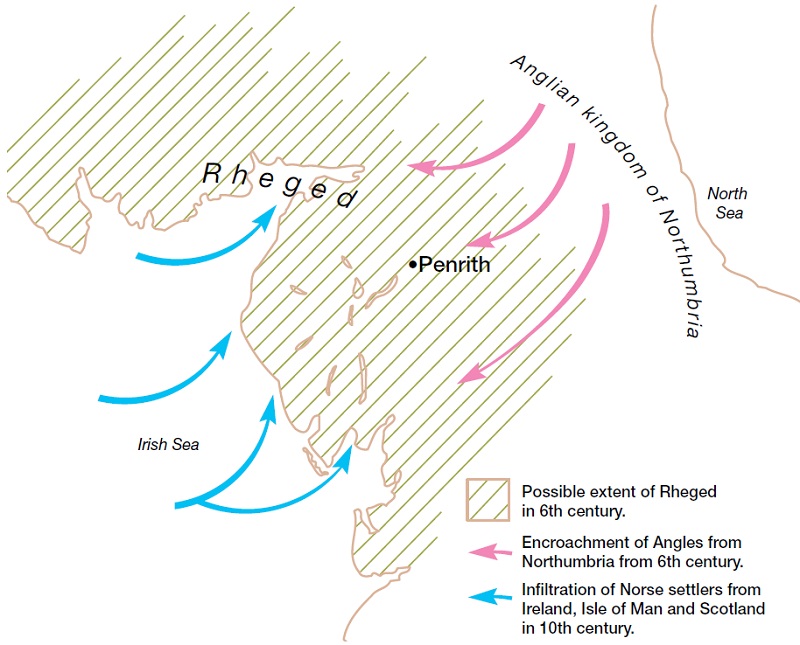
Kingdom of Rheged
After the withdrawal of Roman administration around AD 410, tribal identities reasserted themselves and new territories were formed under local chieftains. Rheged was one such territory whose celebrated king, Urien, may have lived at ‘Lyvennet’ in the Eden Valley.
The name Penrith dates from this period and is thought to mean either ‘red hill’ (after the red sandstone of Beacon Hill) or ‘chief ford’ (in reference to the river crossing at Eamont Bridge).
During the 6th century, Angles from the east began to infiltrate Cumbria. The battles fought by Urien and his warrior son, Owain, against the new invaders became part of Arthurian legend. By the end of the 7th century, Rheged had been completely absorbed into the Anglian kingdom of Northumbria.
The Angles colonised the fertile valleys of the River Eden and River Petteril. Many of their settlements can be identified by the suffix ‘ton’ as in Clifton, Skelton, Plumpton and Stainton. The Forest of Inglewood, originally stretching from Carlisle to Penrith, means ‘Wood of the Angles’.
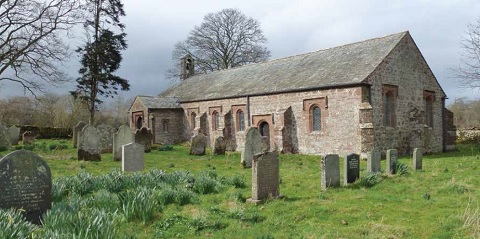
St Ninian’s (or Ninekirks) Church
Ken Saiger
This was the age of gradual conversion of pagan Celtic sites to Christianity. St Ninian, one of Cumbria’s earliest Christian saints, is thought to have founded the church at Ninekirks in the 6th century. Other early church sites are at Dacre and Edenhall, and St Andrew’s church in Penrith is also likely to be on a site of ancient worship.
The waning influence of Northumbrian power in the late 8th century allowed Cumbria to be annexed by the kingdom of Strathclyde. Although subject to overrule by Scottish kings, it seems that north Cumbria was managed as a semi-independent state with its own line of kings and Penrith as its capital.
During this period, the west coast of Cumbria was subject to a peaceful infiltration by Norse settlers from Ireland, Isle of Man and the Scottish Isles, travelling by boat across the Irish Sea in search of new grazing lands. They followed rivers upstream, establishing their traditional longhouses in clearings by running water. These early settlements form the nuclei for many of today’s villages, such as Melmerby, Langwathby, Calthwaite and Southwaite (‘by’ = village; ‘thwaite’ = ‘clearing’). Many local dialect words such as ‘fell’ (hill), ‘tarn’ (small upland lake) and beck (mountain stream) also have their origins in the Norse language.
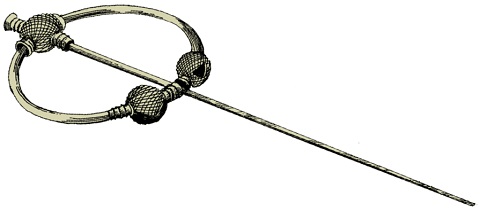
A fine example of a Norse thistle brooch dating from the early 10th century, found near Penrith in 1785. It is now in the British museum.
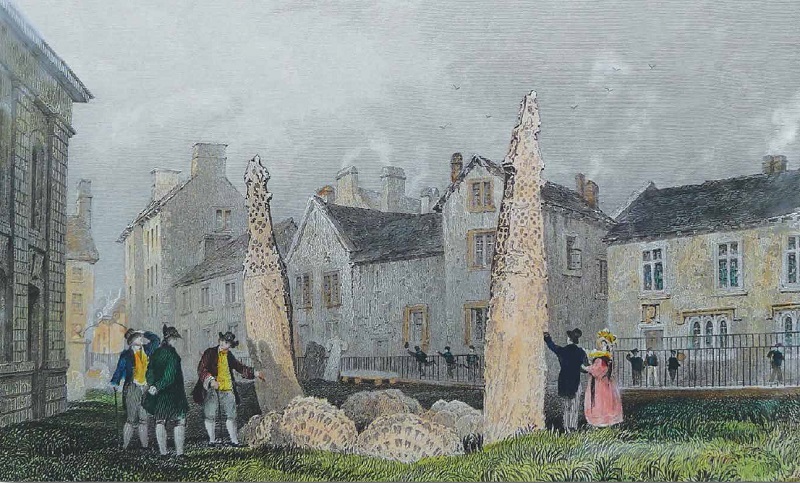
Tinted engraving of the Giant’s Grave, Penrith
Courtesy of Beckstones Bookshop
The area must have been something of a cultural melting pot. The weathered cross shafts and ‘hogback’ stones in St. Andrew’s churchyard in Penrith display an intriguing mix of traditional Anglian, Celtic and Norse decorative motifs.
The prominent assemblage of two carved crosses linked by four Norse hogbacks is commonly known as the ‘Giant’s Grave’. According to legend, this is thought to be the resting place of Owen Caesarius, king of Cumbria between 920 and 937 AD. Other accounts link the grave with Owain, son of Urien of the kingdom of Rheged and to the legends of King Arthur. More fancifully, it is supposed to be the burial place of the mythical giant Sir Ewan, who resided in the Giant’s Caves on the banks of the river Eamont near Penrith.
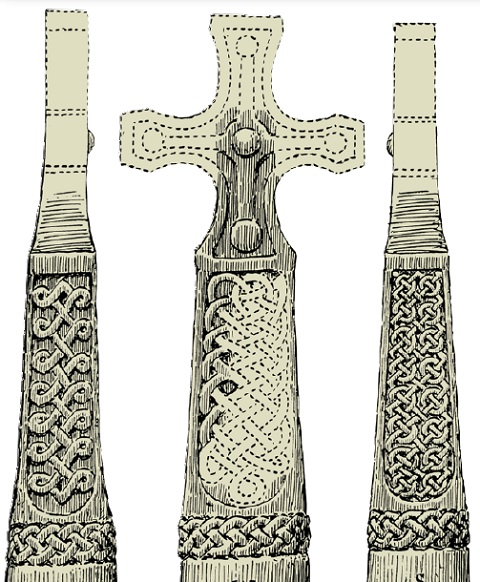
Detailed drawings of the Giant’s Grave by W.G. Collingwood
Penrith and Eden Museum
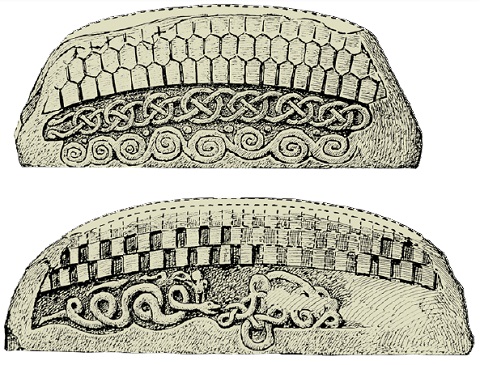
Detailed drawings of the Giant’s Grave by W.G. Collingwood
Penrith and Eden Museum
Giant’s Thumb
Dated to c.920, this wheelhead cross in St Andrew’s churchyard is thought to have been erected by Owen, King of Cumbria, as a memorial to his father. At some point it was used as a pillory to punish wrongdoers and the lower holes may have been enlarged for this purpose. The cross was erected on its new base in 1887.
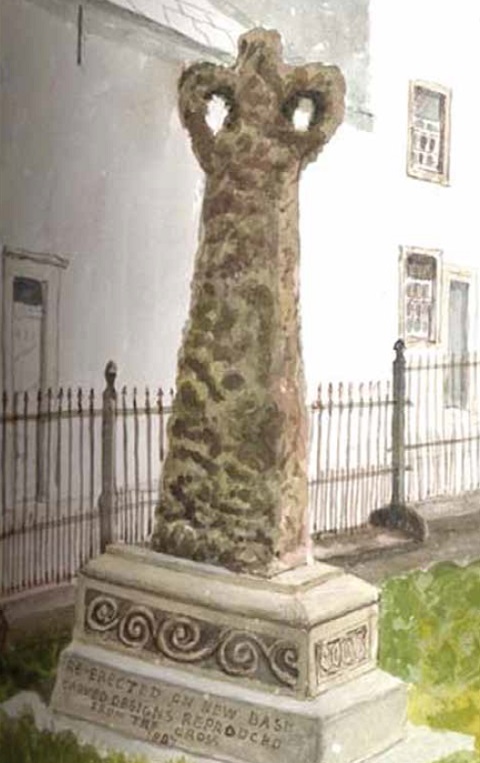
Giant’s Thumb by John Thompson
Cumbria County Council (Penrith Library)


